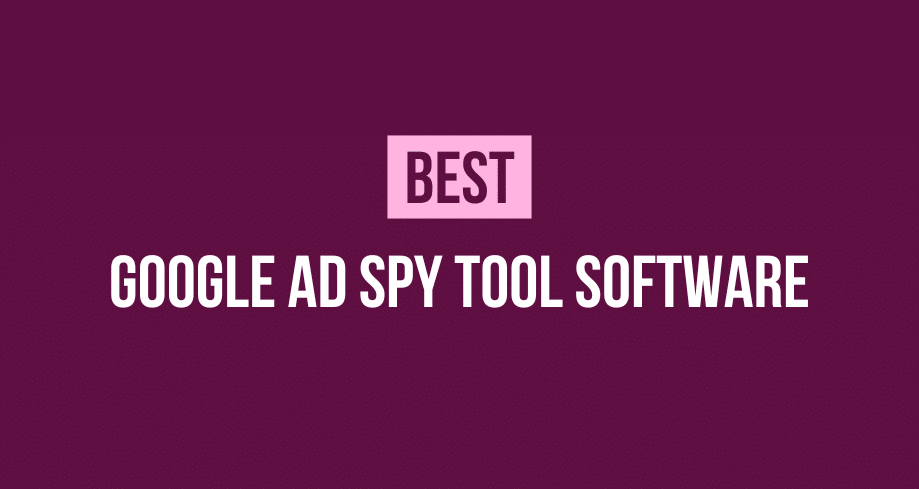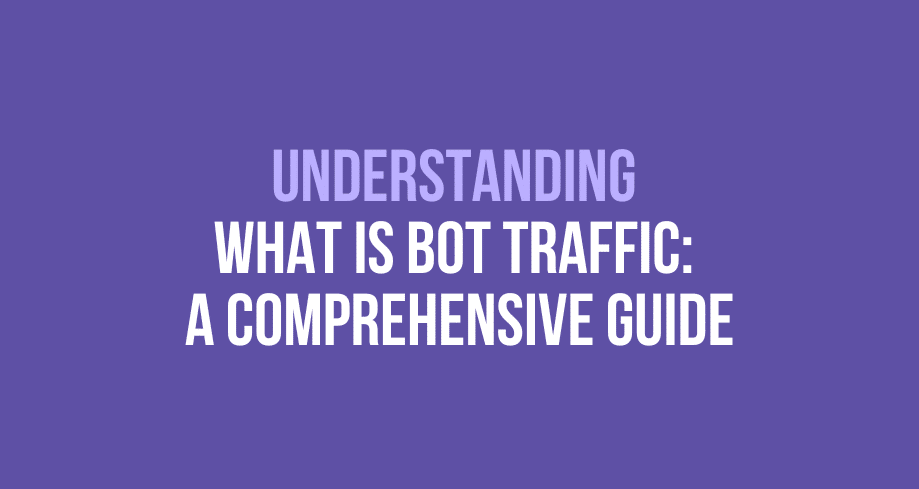Google Ad Spy tool software is one of the best tools that you can use to spy on your competitors’ Google Ads campaigns. It provides a wealth of information about how your competitors are running their ads, what keywords they are targeting, and how much they are spending on advertising. This information can help you to optimize your own Google Ads campaigns and to find new and profitable keywords to target.
What Are Google Ads?
Google Ads, formerly known as Google AdWords, is an online advertising platform created by Google that allows advertisers to create and display ads on Google’s search engine results page (SERP) as well as across its vast network of partner websites. This makes advertising on Google worth it. Through this platform, advertisers can target their desired audience directly with their choice of keywords, demographics, interests, geographical locations, and more. With Google Ads, businesses are able to appear in front of people who are actively searching for the products or services they offer at the exact moment they’re looking for them.
Ads on the Google Ads platform are text-based and can be composed of a headline and two lines of line text accompanied by a clickable link. These ads may also come with additional features such as a site link extension to link to specific pages on an advertiser’s website or local business listing extensions that show their location and contact information on the SERP. Additionally, advertisers can use image-based display ads if they want more visual appeal over text-based advertisements. Display ads can be placed on various Google partner networks such as YouTube or Gmail.
The pricing system of the Google Ads platform is based entirely on an auction system where advertisers bid against each other for placement within the SERP. The cost per click (CPC) is determined by who bids the highest amount and what relevance their ad holds compared to competing ads. This ensures that only relevant content appears in front of users when they are searching for it while also allowing smaller businesses to compete against bigger players in the same field due to their ability to target specific audiences that align with their budget requirements.
What Are Google Ads Extensions?
Google Ads Extensions can be used to provide valuable customer insights and boost engagement on the ads themselves. For example, adding customer ratings and reviews provides additional opportunities for customers to interact with the ad and can increase click-through rates by allowing customers to see what other people thought about the product or service. Additionally, displaying offers or promotions alongside the ads helps motivate potential leads into taking action, rather than just scrolling past the ad altogether.
Businesses can also leverage Google Ads Extensions to list contact information such as phone numbers and addresses, providing potential customers with multiple ways of getting in touch or learning more about the business. This increases trust between potential customers and the business itself, making them more likely to take action when they come across the advertisement online.
As an added bonus, displaying extensions along with your ads may even help improve your ad’s Quality Score – Google’s way of determining how relevant your ad is compared to other ads competing for similar keywords – since each extension acts as an additional indicator of relevance for Google’s algorithms.
How to Run Google Ads Competitor Analysis
Google Ads competitor analysis is an important part of any digital marketing strategy. It can help you identify areas in which your competitors are outperforming you, and it can also give you insight into the strategies they are using to gain an advantage. Here’s how to run a Google Ads competitor analysis:
1. Identify Competitors
The first step in running a Google Ads competitor analysis is identifying the competitors that you will be researching. You can do this by looking in your market, finding the most successful companies, and then refine your selection based on their usage of Google Ads. Additionally, consider analyzing competitors who serve similar customers but offer different products or services.
2. Set Up Tracking & Reports
After your competitors have been identified, you will need to set up tracking and reporting processes for the data that you want to monitor and measure. This will usually involve creating campaigns with specific keywords related to each competitor, setting up tracking parameters such as conversion rates, clicks per ad spent, bounce rate, and other metrics, and setting up custom reports that allow easy access to data points across various timeframes (such as daily/weekly/monthly/yearly).
3. Analyze Performance Metrics & Strategies
Once all of your tracking and report setup processes are complete, it’s time to start analyzing performance metrics and strategies being used by your competitors. Look at things like what keywords they are targeting, what type of creative they are using for ads (including text ads versus display ads), how often they bid on particular PPC keywords, what kind of landing pages they use for ad campaigns, etc. All these insights can give valuable information on how best to optimize your own campaigns so that you outrank them in SERPs (Google search engine result pages).
4. Adjust Your Strategy Accordingly
After analyzing performance metrics and strategies across all your competitors’ accounts, it’s time to adjust your own strategy accordingly to gain an edge over them in terms of ranking higher in SERPs for certain PPC keywords or phrases. Try changing things like adding long tail keywords related to the main ones used by competitors; bidding higher on certain key phrases; tinkering with ad copy or landing page design; testing different types of creative; altering budget allocations between accounts; etc., until you find something that works better than what your competition offers – then implement those changes across all accounts affected by the optimization process!
By taking the steps outlined above when running a Google Ads competitor analysis process – both actively monitoring rivals as well as frequently making adjustments based on their tactics – businesses should be able to stay ahead of their competition while optimizing their own campaigns for maximum return on investment (ROI).
How to Spy on Competitor-Paid Keywords
The first step in spying on competitor-paid keywords is to identify which search engine or platform they are utilizing. Many companies use Google Ads or Bing Ads platforms to advertise their products or services online. You will need access to either of these platforms in order to track your competition’s spending habits and keyword utilization. Once you have access, you can view detailed campaign data such as ad impressions , clicks, and cost per click (CPC) for each keyword being used.
Next, you will want to analyze the performance of each keyword utilized by your competition. Pay close attention to the total budget spent on each keyword as well as CTR (click-through rate), CPC, and other performance metrics related to conversions and ROI (return on investment). This data should give you an idea of which tactics are working for them and which ones may be missing the mark.
In addition to viewing your competitors’ keywords directly from within a search engine platform, there are also several third-party tools that allow you to spy on their performance without having access to their accounts. These tools can provide valuable insights into competitor marketing strategies such as seasonal changes in keyword utilization, average monthly spend on search terms, average number of bids placed per keyword and more.
How to See Competitor’s Google Ads
The first step is to use a tool like SpyFu or SEMRush. These are powerful ad spy tools that allow you to research your competitors and see what keywords they are bidding on and the ads they are running. You can also see the estimated cost per click for the ads, which gives you a good indication of their budget and strategy.
Another way to find out what competitors are doing with their Google Ads is by using Keyword Planner. This tool allows you to search for terms related to your business and then compare them with similar keywords used by competitors. By comparing your own keywords with those used by competitors, you can identify opportunities that could potentially help improve your own PPC campaigns.
You can also use reverse image search tools such as TinEye or Image Raider to find out what ads your competitors are running on different platforms. By doing this, you’ll get an idea of what kind of visuals they are using for their PPC campaigns and how effective it might be for engaging customers. This can offer valuable insight into how you should create images and videos for your own Google native Ads campaigns.
Top advertisers on Google
The top five Google advertisers based on spend are Amazon, AT&T, Apple Inc., Microsoft Corp., and Verizon Media. Amazon has been a consistent leader when it comes to spending on Google Ads since 2015 and they remain a major player today. AT&T has also been one of the top advertisers since 2018, followed closely by Apple Inc., who have consistently increased their ad budget over the past few years. Microsoft Corp. recently jumped into fourth place after significantly increasing its ad spending in 2019; meanwhile Verizon Media rounds out the top five after having spent nearly $1 billion in 2020 alone.
When it comes to industries that invest heavily in Google Ads, retail leads all other categories with over 53% of total spend attributed to retail companies like Amazon and Walmart. Automotive follows at 10%, followed by Financial Services (9%) and Telecom (7%). Interestingly enough, many brands from these sectors also make up some of the largest individual spenders on Google Ads – including AT&T, Ford Motor Company, State Farm Insurance Co., T-Mobile USA Inc., Wells Fargo & Co., GEICO Insurance Co., USAA Insurance Co., Bank Of America Corporation, etc.
Why Do You Need PPC Competitor Analysis
PPC competitor analysis also allows you to keep up with the ever-changing online marketing landscape. By monitoring your competitors’ campaigns, you can stay on top of trends and adjust your own strategies accordingly. You don’t want to be left behind while your competitors move ahead with new tactics and strategies – or worse, wasting money on tactics that have become outdated or ineffective.
For even greater insight into the competition, look at both active and expired ad campaign as well as those that have been paused temporarily. This will help you understand which keywords are most effective for your competitor’s ads and which ones may be worth targeting in the future. You can also look for new opportunities by discovering keywords that your competitors aren’t targeting yet but could be beneficial for your business if utilized properly.
Best PPC Spy Tools
One of the most popular PPC spy tools is SpyFu. It provides detailed analytics that allow you to analyze competitors’ strategies and monitor their campaigns. This includes keyword optimization, ad copy analysis, campaign performance analysis, and more. Additionally, SpyFu offers a variety of features such as automatic alert notifications when your competitors make changes to their ads or bids so you can keep up with them quickly. Do you want to know what is Spyfu? Find out everything about it here
Another great PPC spy tool is WordStream Advisor. This tool allows you to identify profitable keyword opportunities for your business by providing detailed data about your competitor’s keywords. It also offers A/B testing so you can measure how your competitors ads perform against other campaigns in order to optimize performance. WordStream also offers automation capabilities that help reduce costs and time associated with manual management of campaigns.
Conducting effective PPC research requires multiple data sources and AdGooroo is one of the premier sources for this type of information. Their platform provides comprehensive insights into search engine marketing (SEM) trends through real-time analytics and historical data reports. AdGooroo also helps identify high performing keywords used by competitors which can be easily integrated into your own campaigns for profitable returns on investment (ROI).
Hitwise is another powerful PPC spy tool that allows users to track consumer behaviors across a variety of digital marketing channels including search engines, websites, email campaigns, and mobile apps among others. Hitwise provides users with detailed demographic information about target audiences in various markets as well as the ability to customize reports based on search parameters or geographic locations for enhanced targeting accuracy throughout campaigns.
Finally, SEMrush is a comprehensive suite of SEO (Search Engine Optimization) and PPC tracking tools specifically designed for digital marketers who want maximum visibility over their campaigns. This powerful platform includes features such as keyword research tools that generate comprehensive lists of related terms; link building tools to help improve website rankings; competitor intelligence modules that reveal strengths and weaknesses in competitor’s campaigns; and backlink audit functions which provide insight into potential issues affecting website authority or reputation online. All these features are provided within an intuitive dashboard interface that makes it easy to monitor progress over time while optimizing efforts along the way.
Best Display ad tools
1. Google Ads
One of the most popular display ad tools, Google Ads offers businesses a range of features to successfully manage their campaigns. With its intuitive user interface and analytics, businesses can create and customize ads in various sizes to fit their needs. It enables companies to set up remarketing campaigns, adjust their bids, target specific audiences based on demographics, interests, search terms and location and track the performance of their campaigns in real-time through detailed reports.
2. Adobe Advertising Cloud
This is an end-to-end platform for delivering focused digital advertising with data-driven insights that helps businesses increase ROI. It enables users to combine multiple data sources like web analytics and market research into one platform for better targeting capabilities. It also offers campaign optimization tools that allow marketers to make informed decisions in order to maximize conversions, as well as creative optimization tools for creating visually appealing ads quickly and easily.
3. Facebook Ads Manager
This powerful tool allows businesses to create targeted PPC ads designed specifically for the Facebook community they’re targeting. It offers a wide array of features such as audience segmentation, multivariate testing, budget control and reporting so that advertisers can ensure their campaigns reach the right people at the right time with the right message – all within a single dashboard. Additionally, it provides users with an easy way to promote their brand across multiple social networks via carousel ads or dynamic product ads which are automatically updated based on visitor behavior on each ad networks.
4. Bing Ads
This comprehensive ad platform has been around since 1998 and offers both search engine marketing (SEM) opportunities as well as display ad capabilities so business owners can take advantage of both types of online advertising within one platform. Bing Ads allows users to set up campaigns using keyword targeting as well as demographic data in order to more accurately target potential customers who are most likely interested in what they’re selling or offering services for. Furthermore, it also provides useful tracking metrics so you can measure how well your ads are performing over time allowing you to optimize them accordingly for maximum results from your spendings on display advertising efforts.
5. The Trade Desk
A leader in real-time bidding technology, this cloud-based software is used by many large brands looking to buy premium inventory programmatically across a variety of different channels such as TV, mobile apps or even connected devices like smart TVs or gaming systems etc.. It combines media buying features such as budgeting controls and automated bidding strategies alongside analytics that allow marketers to gain insightful information about consumer behavior so they can get more out of every dollar spent on display advertising initiatives.
6. AdRoll
An omnipresent retargeting solution that works across platforms including web browsers and mobile phones; AdRoll also enables marketers access sophisticated tracking options with customizable ads for higher engagement levels via dynamic creative optimization which helps you improve engagement through personalized messages tailored specifically towards individual profiles or groups based on previous interactions with content or products you offer enabling businesses gain better ROI from their investments in display advertising efforts while reaching out further towards prospects interested in what they have available.
How to Spy on Competitor’s Landing Pages
Spying on competitor’s landing pages can be done in a few different ways. The most popular method is by using analytics software. By tracking user behavior and page performance, marketers can easily see which areas of a landing page are doing well or not so well and can then use that data to inform their own strategies. There are plenty of tools out there that offer insights into competitor’s pages such as Google Analytics or Hotjar. Another option is simply using search engine optimization (SEO) techniques like setting up backlinks or optimizing your website for organic search results. By analyzing how often your competitors show up in search engine results compared to yours, you can get an idea of who is performing best in terms of SEO tactics.
It’s also important to examine the actual content that appears on the competitor’s landing page. This includes looking at the copywriting style, images used, and any other visuals presented which all help give an idea of how effective their overall message might be for attracting customers. Additionally, checking a competitor’s meta tags and titles will give you insight into which keywords they are targeting with their page content. Doing this will allow you to optimize your own content by ensuring it aligns with what potential customers may be searching for when trying to find similar products or services offered by competitors.
Finally, taking some time to explore any reviews or feedback left about a competitor’s landing page can offer further insight into how people perceive their offerings versus yours; this could include anything from customer service experiences or delivery timescales through to quality complaints or issues such as slow loading speeds etc., helping you identify areas where your own product/service could stand out from the competition’s offering in the eyes of consumers.
Frequently Asked Questions
How do I spy on Google Ads?
To spy on your Google Ads, first login to your Google Ads account. Once you are logged in, click the “Tools” tab and then select “Google Analytics.” On the following page, click the “AdWords Linking” button and then copy and paste the tracking code into the appropriate spot on your website. Finally, click the “Verify” button to complete the process.
What is the best spy tool?
There is no one-size-fits-all answer to this question, as the best spy tool depends on the specific needs of the individual or organization. However, some popular spy tools include hidden cameras, listening devices, and tracking software.
How to spy on competitor display ads?
One of the most effective ways to learn more about your competitors’ display ads is to spy on them. There are a variety of tools available that can help you do this with ease.




